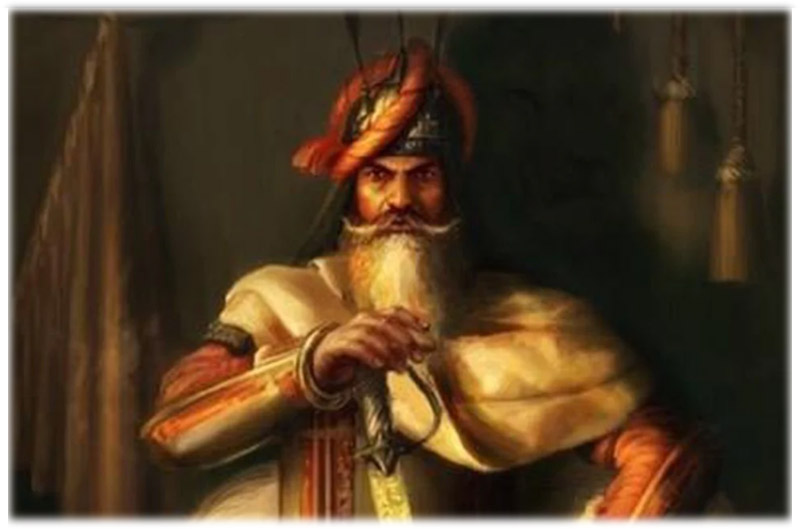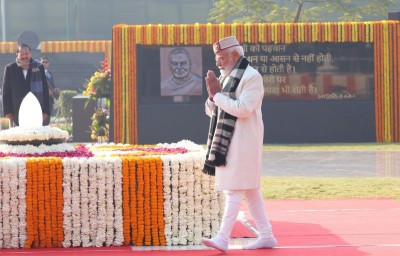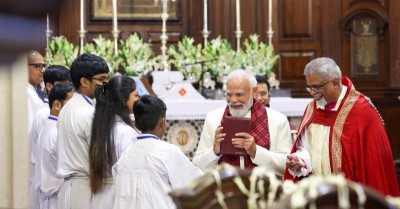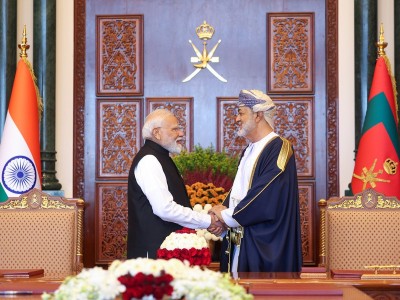 Hari Singh Nalwa
Hari Singh Nalwa
Hari Singh Nalwa: The Lion of Punjab
In 1881, British newspapers compared many great generals from history and came to the conclusion: “Some people might think that Napoleon was a great general. Some might mention Marshall Hindenburg, Lord Kitchener, General Karobzey, or Duke of Wellington, etc. And some going further might Say, Halaku Khan, Genghis Khan, Changez Khan, Richard or Allaudin, etc. But let me tell you that in North of India, a general of the name Hari Singh Nalwa of Sikhs prevailed. Had he lived longer and had the sources and artillery of the British, he would have conquered most of Asia and Europe…”.
As the legend goes, once whilst Maharaja Ranjit Singh and Hari Singh were passing through. a jungle, a lion suddenly charged at the Maharaja’s horse. In order to protect his king, the latter leaped at the lion and bare-handedly severed its jaws. Since then, he came to be known as “Baghmaar” (lion killer) and “Nalwa”.
Known as the “most feared Sikh”, Hari Singh Nalwa, had subdued the unruliest forces in Afghanistan. After gaining conquest of a sizeable area along the Afghan border, he forbade them from crossing the Khyber Pass, which was the gateway for foreign invaders into India from 1000 AD till the early 19th century. According to the former Vice-Chancellor of GNDU, Amritsar, Dr. S. P. Singh, the Afghans were so terrified of Nalwa that Afghani mothers often used his name to instill fear amongst their unruly children: “Go to sleep otherwise Hariya (Hari Singh Nalwa) will come”.
Hari Singh Nalwa was born in 1791 in Majitha, a town close to Amritsar. He was a Sukerchakia Misl descendant, a Sikh lineage revered for their bravery and aggressive demeanor. Both his father and grandfather were outstanding warriors themselves. After his father’s death, he was raised by his mother and maternal family. At a very young age, he was commissioned as ‘Sardar’ by Maharaja Ranjit Singh in 1805, commanding 800 horses and many footmen.
Afghanistan, known infamously as the graveyard of empires, was understood to be an uncontrollable region at that time. Hari Singh Nalwa tamed those turbulent forces at play in this region as a commander in chief of Maharaja Ranjit Singh’s Khalsa. He defeated the Afghan Monarch Qutub-ud-din of Kasur and was awarded a ‘jagir’ for the same.
Although the battle of Kasur (1807) was his first significant conquest, it was just the beginning of his military career. In the Battle of Sialkot, seventeen-year-old Hari Singh carried the day after a two-day fight against Jiwan Singh (ruler of Sialkot). He fought/commanded twenty major battles in his lifetime including the Battle of Attock (1813), Conquest of Mehmood Kot (1816), and Battle of Multan (1818), where he was seriously wounded, nonetheless “chiefly instrumental” in the capture of the fort which was a difficult but successful feat.
Nalwa’s true prowess emerged on the battlefield. He was a masterful tactician, known for his brilliant military strategies that outwitted even the most skilled opponents. Whether it was his strategic use of artillery or his ability to adapt to changing battle conditions, Nalwa’s genius always shone through.
The Sikh army captured Kashmir in 1819 under the leadership of Ranjit Singh, supported by his commanders Prince Kharak Singh, Misr Diwan Chand, and Hari Singh Nalwa. There was a great celebration and the twin cities of Lahore and Amritsar were illuminated for 3 successive nights as the five-century-old Muslim rule in Kashmir came to an end. Two years later Hari Singh was made the Governor of Kashmir.
Another couple of years later, he fought and spectacularly won the Battle of Mangal (1821) in Pakistan’s Hazara region, after his successful completion of Governorship of Kashmir. He was nominated the Jagirdar-Governor of Great Hazara (1822-1837).
This 15-year stint was a remarkable achievement as the region had limited resources but a turbulent population. It is often marveled that only someone of a strong will as he could have controlled this region. “Of unbounded energy and courage, he was ruthless towards those who opposed his path. The town of Haripur fittingly perpetuated his name and the fort of Harkishangarh forms an enduring monument of his power.” (Hazara 1907:130).
Hari Singh fought numerous battles; the Battle of Sirikot (1824), the Battle of Saidu (1827), the occupation of Lahore (1827), and Peshawar (1834) from Muslims. Eye witness accounts reveal that in lieu of Nalwa’s formidable reputation in ‘Pashtunistan’, the Afghans simply fled without a battle, handing over Peshawar, and its fort Bala Hissar, to Hari Singh on a platter! He took the seat as the Governor of Peshawar from 1834-1837, after the Battle of Jamrud which remains one of his most celebrated victories. This resounding triumph against the Afghans was a golden period in the history of Sikh warriors and it solidified his reputation as a military leader and earned him the admiration of friends and foes alike.
While Nalwa was a formidable warrior, he was not solely defined by his military achievements. Whilst he was an astute statesman and administrator, as governor of Peshawar and Kashmir he implemented progressive policies and ensured justice for his people. Nevertheless, his legacy extends to 56 buildings attributed to him including forts, towers, Gurudwaras, tanks, Samadhis, temples, mosques, towns, etc. He constructed the fortified town of Haripur in 1822, the first planned town in the region with a state-of-art water distribution system. Harkishangarh, the fort was rock solid surrounded by 4 yards thick and 16 yards high walls.
He built all Sikh forts in the Khyber Pakhtunkhwa region – Jehangira and Nowshera on the banks of river Kabul and Sumergarh (or Bala Hissar) in Peshawar. The foundation of fort of Fatehgarh (at Jamrud) and the fort of Uri (Kashmir) were also laid down by him. The pious side in him is seen in his building of Gurudwara Punja Sahib (Pakistan) to commemorate Guru Nanak Devji’s journey to the region. The gold that covers the Akal Takht dome of Hamindar Sahib (Amritsar) is also said to be donated by him.
Sardar Hari Singh Nalwa gained martyrdom in the Battle of Jamrud (1837). This Lion of Punjab was a larger-than-life figure who left an indelible mark on the history and culture of this region. Even today his name is taken with reverence and pride. His legacy serves as a beacon of inspiration to future generations.
In the 19th century, he was the muse of various renowned poets like Qadir Baksh urf Kadaryar and Ram Dayal. On April 30, 2013, a commemorative postage stamp was issued by the Indian Government on his 176th death anniversary. ‘Vaar’, the song by Siddhu Moosewala is about this fighter, leader, and martyr. The legend of Hari Singh Nalwa lives on, reminding us of the power of resilience and the indomitable spirit of Punjab.
(Image and Text: Khalsavox.com)
Support Our Journalism
We cannot do without you.. your contribution supports unbiased journalism
IBNS is not driven by any ism- not wokeism, not racism, not skewed secularism, not hyper right-wing or left liberal ideals, nor by any hardline religious beliefs or hyper nationalism. We want to serve you good old objective news, as they are. We do not judge or preach. We let people decide for themselves. We only try to present factual and well-sourced news.







